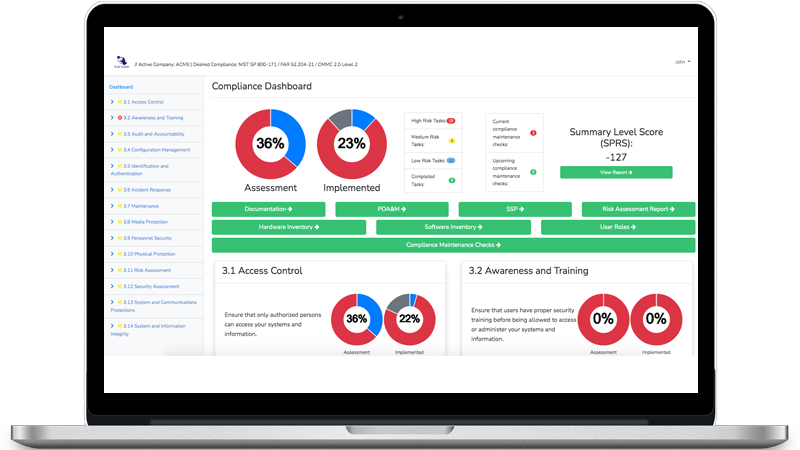
Book a Discovery Call
- How long does it take to become compliant?
- How much does it cost to become compliant?
- See a demo of our solution

Show: AC.L2-3.1.11 – Terminate (automatically) user sessions after a defined condition.
This control comes from NIST SP 800-171 REV.2 / CMMC 2.0 Level 2.
This control requires you to define the conditions under which user sessions must end and ensure the system enforces termination automatically when those conditions occur. Typical conditions include a period of inactivity, time-of-day limits, network changes, or a maximum session lifetime. By cutting off stale sessions, you lower the chance an attacker can hijack an unattended or orphaned session and move within your environment.
Publish an Access Control or Session Management Policy that defines required session termination conditions and timeouts by system type (workstations, servers, VPN, RDP, SSH, cloud apps, privileged consoles). Back it with configuration standards for Windows, Linux/UNIX, network devices, VPNs, and SaaS/IdP settings so admins know exactly what to set. Include coverage in your Remote Access Policy (e.g., VPN, bastion hosts), an exception process for legitimate business needs, and a review cadence to verify settings after onboarding new systems, major changes, and at least annually.
A 120-person engineering firm formalizes a Session Management Standard that requires termination after 60 minutes of inactivity for RDP, SSH, and VPN, and 30 minutes for SaaS admin portals. The Windows admin applies RDS session time limits via Group Policy to all servers in the “Admin Access” OU. The Linux admin sets ClientAliveInterval and ClientAliveCountMax on four Ubuntu application servers and adds TMOUT to the global profile. The network team configures a 45-minute idle timeout on the remote access VPN and enforces reauthentication on reconnect. The security lead updates the IdP to a 30-minute idle timeout and a 10-hour maximum session for cloud apps, with stricter values for admin roles. They test by leaving sessions idle and confirm automatic termination across all paths. Finally, the help desk updates user guidance so staff know to save work frequently and reconnect if idle too long.
Meeting AC.L2-3.1.11 requires clear, documented conditions for when sessions must end and consistent technical enforcement across endpoints, servers, remote access, and cloud apps. By pairing a concise policy and configuration standards with concrete settings in RDP, SSH, VPN, and IdP/SaaS, SMBs can reliably terminate stale sessions and reduce the risk of session hijacking. Ongoing testing, logging, and periodic reviews ensure the control remains effective as systems change.
Quick & Simple
Whether you need to meet and maintain your compliance requirements, help your clients meet them, or verify supplier compliance we have the expertise and solution for you
We typically reply within minutes